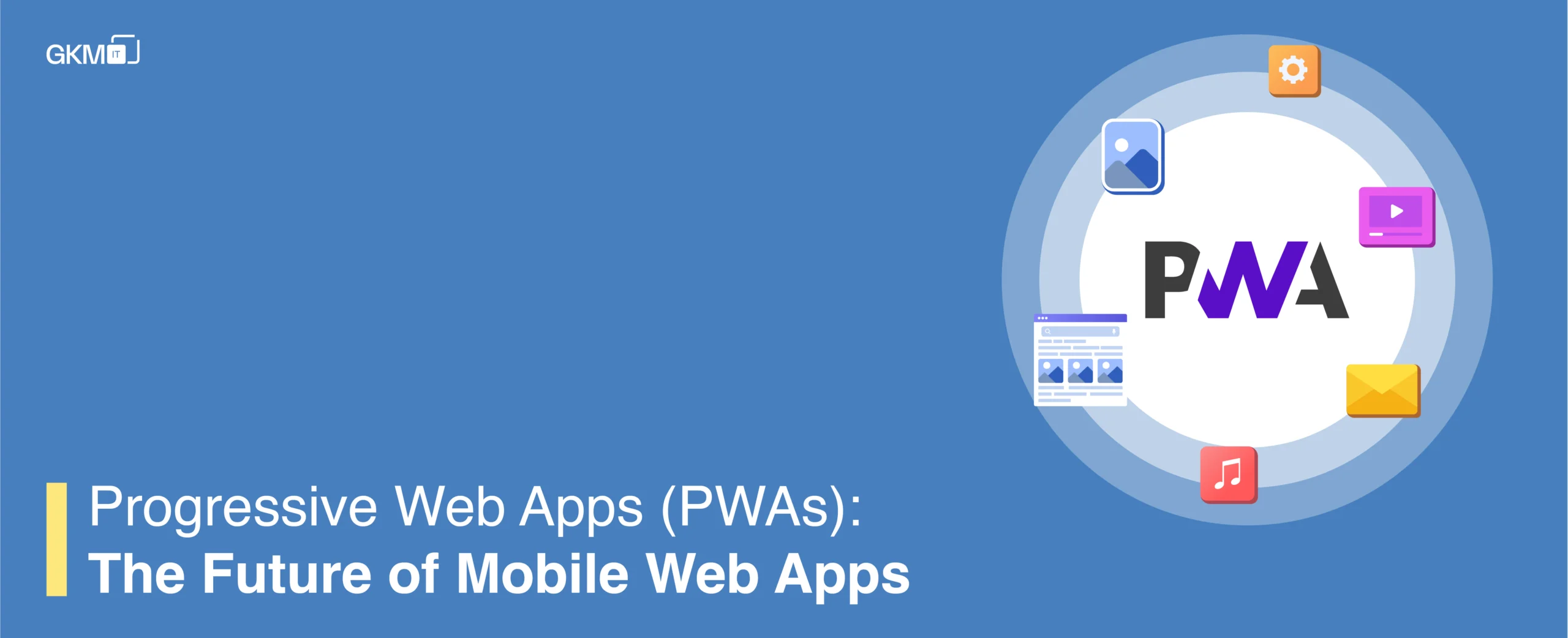
Progressive Web Apps (PWAs): The future of mobile web apps
Users have moved from powerful, always-connected desktop to mobile devices with slow and unreliable connections. Same time www (world wide web) has evolved to become a demanding application platform. We need our user’s time, and in return, our users demand reliable, fast and engaging experiences. We have entered a new era of progressive web apps: the new hotness in the mobile web.
What progressive web apps do? They take advantage of the latest technologies and combine the best of web and mobile apps to deliver the amazing fast native-like user experience.
While browsing a website if you ever come across a banner that says “add to home screen”, you will notice an application gets downloaded in the background while hitting the “yes” button. The app will give you the same experience on your mobile/smartphone that you were getting while browsing a website without having to enter the app store. Also, you will be able to browse content when you are offline. Isn’t it amazing to access apps in offline mode? This heavenly experience is PWA. In simple words, progressive web apps are similar to mobile apps.
Let’s learn how progressive web apps simply work better than typical mobile websites.
When Pinterest replaced their mobile website with PWA, they immediately witnessed a huge lift across various important metrics.
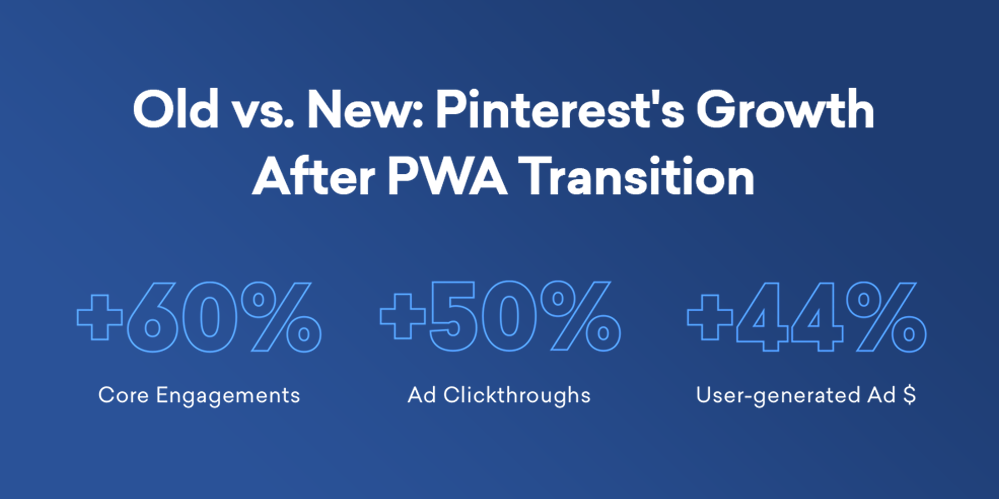
After PWA implementation, every industry witnessed significant vertical highlighting and wide improvement of KPIs, and the success stories are increasing in number.
- West Elm’s PWA implementation earned a 15% increase in time spent and a 9% lift in revenue.
- Flipkart, India’s largest e-commerce site, Flipkart spent triple time on the site and drove 40% higher re-engagement.
- AliExpress, massive Chinese platform Alibaba, witnessed an increase in new users’ conversion rates by 104%.
The continued support of iOS and Android has made brands slow to take advantage of the benefits. We understand there must be some confusion about what PWA’s ultimately make possible, and here we try to clear it up. Obviously, we will talk about the time and investment you put into getting your mobile ecosystem to where it is today.
App architecture of Progressive web apps
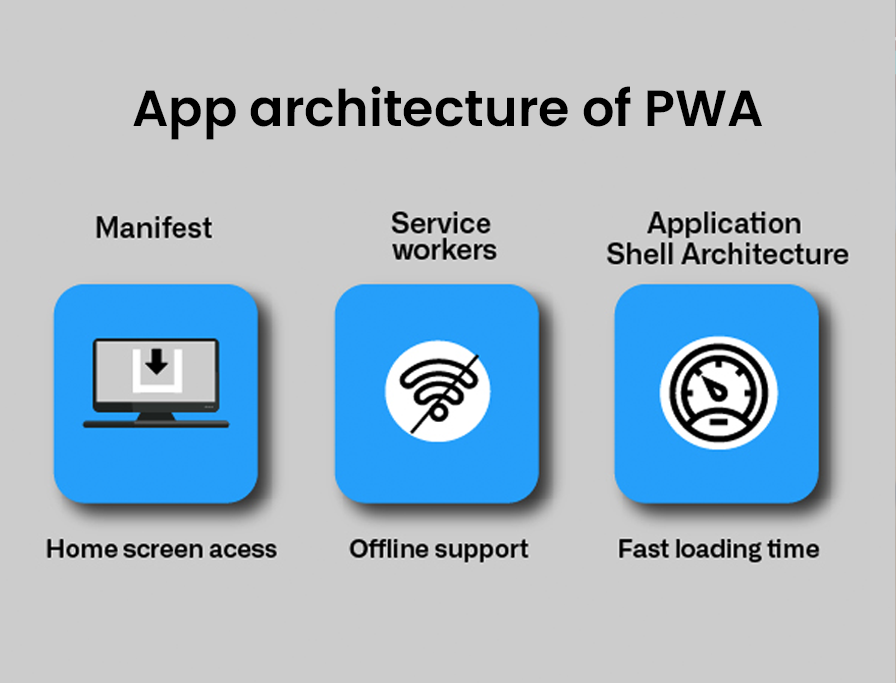
The website interpretation depends on two main approaches
- Server-side rendering
- Client-side rendering
Server-side rendering
To ensure faster loading, it renders the website on the server-side. Navigating between the web pages requires downloading HTML coding. Guaranteed quick functionality across browsers; however loading a new web page may require a round trip to the server.
Client-side rendering
The initial request loads the webpages, CSS, layout, Javascript and content. All these steps are repeated for subsequent updates. Updates initiate instantly while navigating across pages. You may witness slower websites at first, but the navigation is quite fast.
Using the above approaches, we can develop progressive web apps. However, the most popular concept among all is App Shell. App Shell reduces minimal user interface loading and then caching, which makes it available offline. UI will load much faster on subsequent visits on the same device. The website built using App Shell is more interactive, fast, and gives feelings like Native apps. By design, it is progressive, linkable and responsive.
Key features of progressive web apps (PWA)
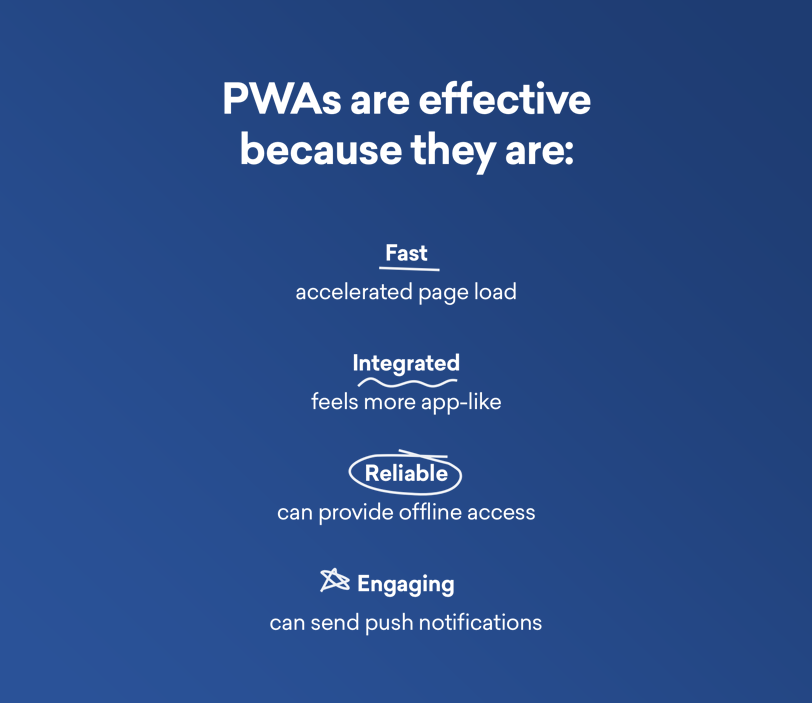
Progressive web apps are designed to deliver excellent user experience and instant loading. Achieve better customer retention and increased conversion ratio through a fast-loading app. Businesses in different domains are adopting PWA due to its high-performance capabilities.
Must-have features of PWA are:
Offline access
Due to unreliable connectivity issues, user experience is undermined most of the time. PWA works even when you lose internet connection. It means you can view stored data and access sites offline.
Progressive
PWA delivers delightful experience by utilising the right capabilities at the right instance of time. Regardless of browser, sites built using progressive guidelines and principles offer basic functionality to everyone.
Increased user engagement
High discoverability, responsiveness, frictionless, and easy to discover attributes of PWA engage more customers. These apps load faster and function seamlessly; thus, it engages more customers.
Secure and faster
Maximum privacy and security to user and website data as these app work over HTTPs. Secure connectivity prevents data breach and prevents sensitive information from unauthorised access.
Responsive
PWA works on all screen sizes, and apps are compatible with different operating systems. They are highly accessible over different devices- mobile phone, laptop, tablet, desktop, etc.
Low development cost
Since advanced development tools and practices are used to build PWA, this makes apps more cost-effective than Native apps. Above all, you get data privacy, zero app complexity, security and cross-platform apps at an affordable price.
SEO friendly
Search engines can easily rank PWAs. Being SEO centric provides great benefits in terms of customer acquisition and visibility. It is quite simple to optimise progressive web apps during custom SEO practices though it is not that simple.
Reliability
PWAs are reliable regardless of network connectivity as they load on the user device. Users can store data and view stored data in offline mode. Pre-caching eliminates network dependency and provides reliable customer experience.
Performance
Users receive an immediate response to whatever action they perform by using PWA. More than 50% of users do not prefer to browse a website as it fails to load within 3 seconds. Once the website is open, users expect it to function flawless and fast with no slow responding interfaces and inconsistent navigation or excessive scrolling.
Engagement
As PWA resides on the user’s home screen; thus, they don’t require to open an app store. These apps
re-engage with push notification and thus offer an amazing user experience. As these apps are built using app manifests, they control how an app looks. In PWA you can arrange home screen icons, screen orientation and the homepage, etc.
The key component of PWA
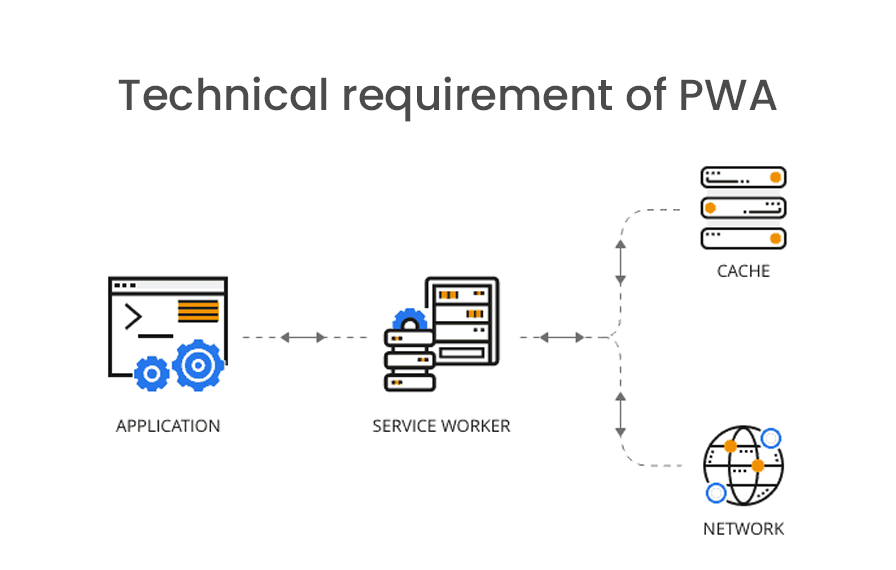
What makes PWA special? Four significant components work on a successful and flawless PWA process. Let’s learn the prerequisite to ensure the successful development of PWA. At a minimum, a website must have a web manifest file, HTTPs, and must register a service worker.
- HTTPs: To ensure complete security and to avoid unauthorised access, a PWA must be deployed via a public web server and work under HTTPs protocol.
- Service workers: offline access is provided through service workers- a Javascript file which serves as a link between the app and the network.
- App manifest: For developing PWA, one of the core technical requirements is App Manifest. It is a JSON file that gives information about PWA with the browser.
- Icon: It is the image that users will see once they install the app on their home screen.
Is PWA the future of web apps?
For hyper-growth and productivity, many businesses are adopting PWAs. Undoubtedly PWA are the future of web applications and let’s check the proven reason behind it;
- Offline access
- Flawless integration
- High user engagement
- Cross-platform accessibility
- Easy to fix bugs and errors
- Lightning-fast speed
- High performance
- Native-app flexibility
Wrapping up
If you are looking to stay ahead in the competition, then PWA is very crucial. There are numerous reasons behind adopting PWA as it is gaining momentum in today’s digital realm. With native apps, a user experiences many problems such as high data consumption, cost, storage space, internet connectivity and many more.
PWA eliminates all the above factors and delivers a great user experience, high accessibility, and many more features. Thus we see a bright future for PWA in the coming years. If you want to learn more about PWA and articles associated with mobile app development, visit GKMIT or leave your comment below.
Happy reading!